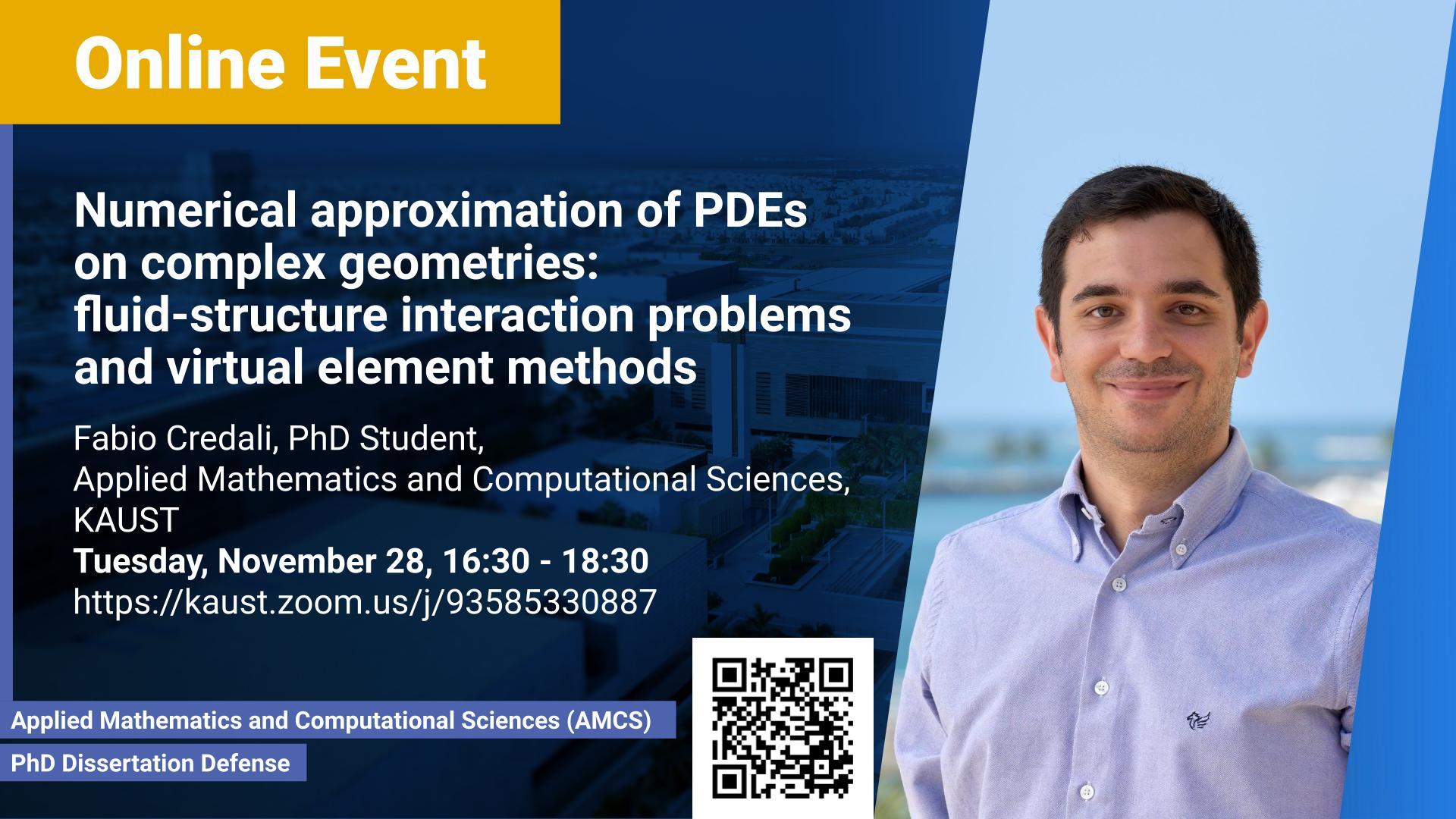Abstract
The studies in numerical approximation of partial differential equations are characterized by the necessity of managing complex geometries and their discretization. We focus our attention on two different fields where complex geometries are very common: the mathematical modeling of fluid-structure interaction problems and the family of virtual element methods.
We first consider the finite element approximation of fluid-structure interaction problems described by a distributed Lagrange multiplier formulation. A crucial aspect of the method is the assembly of the finite element matrix describing the coupling between fluid and structure. This procedure consists in integrating over the solid domain both solid and fluid basis functions, which are defined on two different non-matching grids. This can be done in two ways: the exact approach is based on a composite quadrature rule defined on the intersection between the two involved meshes, whereas the approximate approach is carried out roughly integrating on each solid element. We discuss and compare these two approaches both from the theoretical and computational point of view. Moreover, we present a preliminary study on a parallel solver for our fictitious domain formulation. As a first step towards the design of an effective solver, we consider block preconditioners, which are tested on two simplified academic problems and compared in terms of optimality, weak and strong scalability.
Virtual element methods are known to tackle complex geometries without limitations on the degree of the polynomial that partially contributes to the approximated solution. An important aspect of this method is that we are not required to explicitly compute the basis functions of the VEM space since these are solutions of PDEs. Due to this fact, several quantities are not computed exactly, such as the bilinear form, for which the action on the nonpolynomial part is handled by a stabilization term, and the error, where the contribution of the nonpolynomial part is neglected. In certain cases, such as when anisotropic problems are considered, the method may show poor performance if endowed with standard stabilization terms, which have an isotropic structure. We propose a model order reduction technique constructed by means of the reduced basis method for efficiently solving the equation associated with each virtual basis function. The idea is to replace the stabilization term with an actual approximation of the nonpolynomial contribution. We show that this operation produces good results even if done in a very rough way.
Brief Biography
Fabio Credali is a Ph.D. candidate in the Applied Mathematics program at KAUST, in cotutelle with the joint Ph.D. program in Computational Mathematics at University of Pavia (Italy) and Universita' della Svizzera Italiana (Switzerland), under the supervision of Daniele Boffi and Silvia Bertoluzza. He obtained the Bachelor degree (2018) and the Master degree (2020) in Mathematics from the University of Pavia, under the supervision of Daniele Boffi.
Fabio's research concerns the finite element approximation of PDEs, with particular focus on the simulation of fluid-structure interaction problems and virtual element methods.


